7. Green Room
Jeremy Saulnier, USA
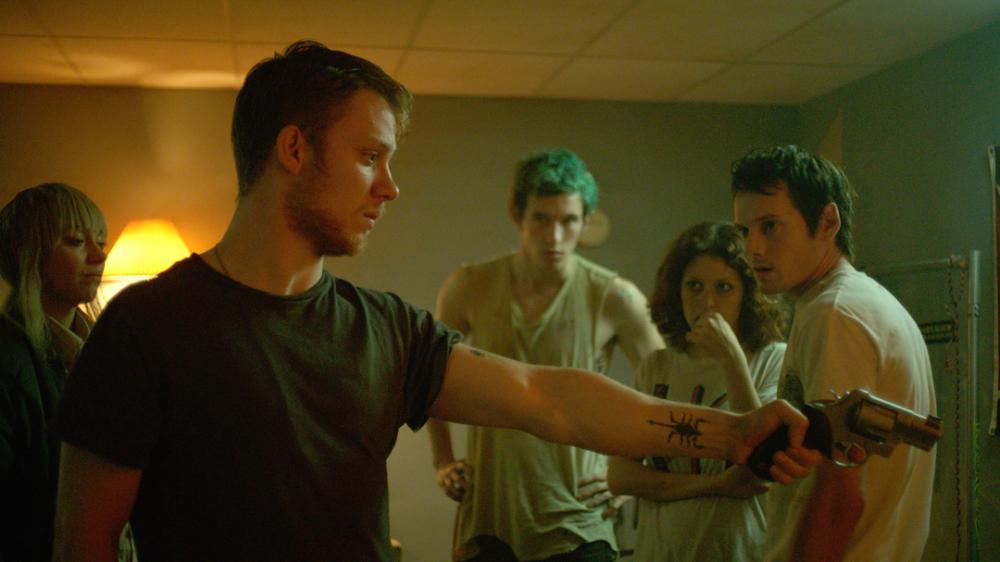
Offering an extremely vicious punk rock variant on Rio Bravo, Jeremy Saulnier‘s (Blue Ruin) intense new shocker, Green Room, is catnip for extreme action thriller devotees.
On the ass end of an awful tour, Pat (Anton Yelchin) and his noisy punk band, The Ain’t Rights, desperate for dough, find themselves headlining a gig at a backwoods skinhead bar, way off the map.
Soon the band witness something grisly in the eponymous green room and then that same room is all that stands between them and a blood-simple, well-armed Neo-Nazi mob, led by a terrifying Patrick Stewart.
As one brazenly executed action sequence follows another, duress and bloodshed reach a fever pitch. The sustained intense onslaughts on our tapering protagonists effectively obliterates any notions of assurance for the audience.
A more thought-provoking and brilliantly paced horror film with so palpable a physicality you will not find. In Green Room nothing is safe, survival is a fool’s paradise, and hope but a blink in a broken beer bottle.
6. Entertainment
Rick Alverson, USA
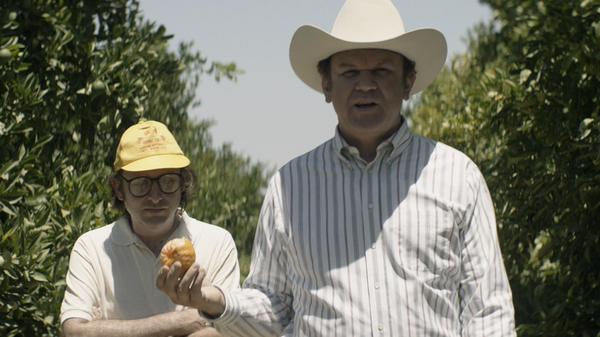
An erratic road movie perplexed by sad poetry, somber perceptions, and preyed upon by endless longing is an apt description of Rick Alverson’s latest, Entertainment.
As he wanders through a dusty, hard-hearted American landscape – mostly the Mojave Desert – a nameless antihero and ho-hum stand-up comic played by Gregg Turkington moves like a man thrown down, on a journey somewhere, maybe home. Alverson’s film is haunting, hypnotic, and disconcerting in succession.
There’s something fatalistic in Turkington’s almost somnambulistic drifting, his tenures in fleabag hotels, and filling stations, his curdled charm, and seemingly surreal asides with bereft eccentrics (including John C. Reilly, Jesus Lizard frontman David Yow, Amy Seimetz, and Michael Cera at his creepiest).
Turkington, in his cheapo suit, dripping sweat, stumbling through the desert, looks like a spurious Moses wandering the wastes of a soured American dream, with a folkloric quality.
5. Mad Max: Fury Road
George Miller, Australia/USA
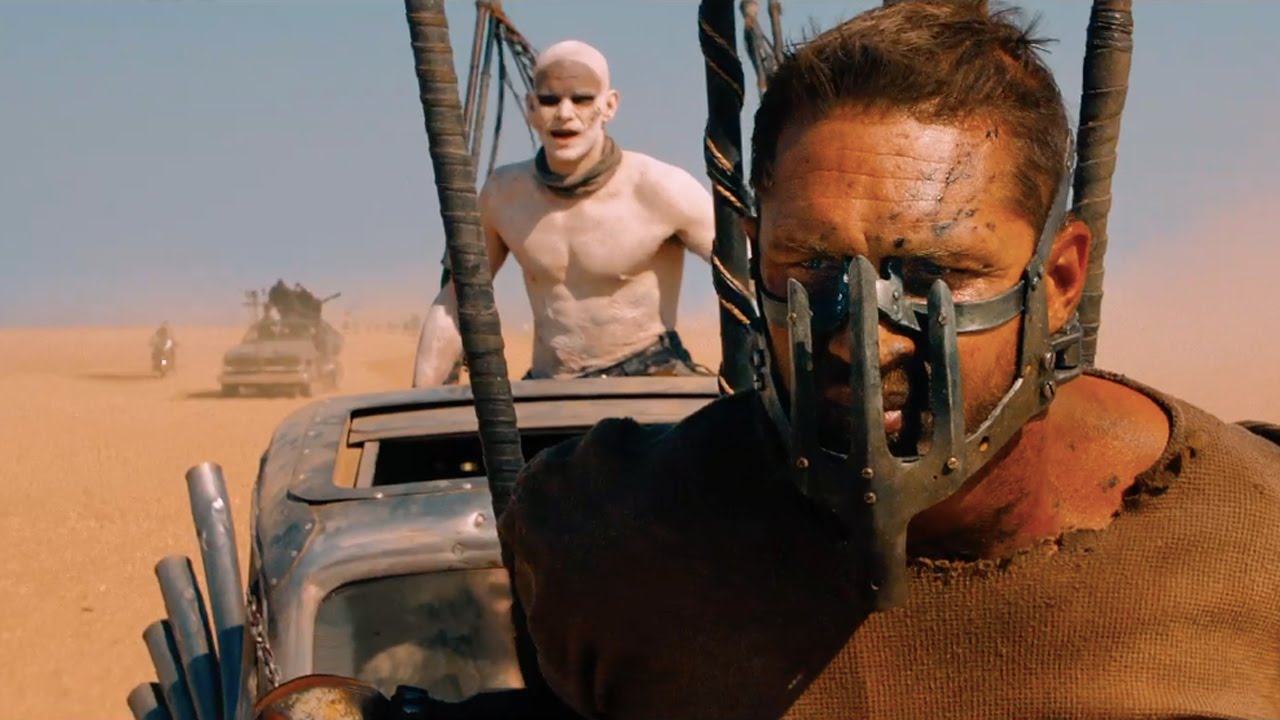
This intense mytho-poetic punk rock actioner has few antecedents, really. I can think of only a few; Henri-Georges Clouzot’s The Wages of Fear, William Friedkin’s Sorcerer, and John Woo’s Hard-Boiled spring to mind, but even if action isn’t your genre of preference it’s near impossible to shrug off the adrenaline charge that George Miller’s Mad Max: Fury Road elicits full on.
Returning to his dystopian milieu that Miller began in 1979 with the first Mad Max, Fury Road, the fourth in the now post-apocalyptic series offers us Tom Hardy in the title role as Max Rockatansky (replacing Mel Gibson, for the better). But Max takes the backseat to Charlize Theron’s now iconic Imperator Furiosa.
Make no mistake, this is an intelligently assembled chase picture, storyline in the periphery to action set-pieces that sharply astound, inventive and complex visuals that miraculously aren’t obscured. The spatial relationships, cause-and-effect forward march of the motorcade, and the kinetic stimulus couple judiciously with road-raging feminist poli-sci and environmental umbrage.
It’s rare that a genre film of this sort receive so many accolades – or any at all – let alone transcend so many stereotypes. Blockbusters are rarely if ever this material, for a franchise film, Fury Road is a diesel-exhaust-fumes-spitting trailblazer, and a brilliant one.
4. Anomalisa
Duke Johnson and Charlie Kaufman, USA

Combining high ambition with near errorless achievement, Anomalisa is an intimate stop-motion moral story as well as an experiment in cinematic form. Directors Duke Johnson, and Charlie Kaufman have undertaken a risky project here, one hinging on a nominal sketch, basically, and complete it with such a stunning success.
At first a rather mundane story about an author of popular books on customer service, voiced by David Thewlis, going on a business trip to Cincinnati lulls the viewer into an anxious ennui before making it into a weird Kafkaesque experience, with shades of Philip K. Dick – the influence we’ve most come to expect from Kaufman.
Anomalisa depicts an almost innocuous story – aspects of it feel deliberately incomplete – and still it carries a melody of carefully sequenced chords, concentus, and uncertain rhythms; notes from dreams, jewels dredged from the slough of a flowing well of creativity. Wow.
3. The Duke of Burgundy
Peter Strickland, UK
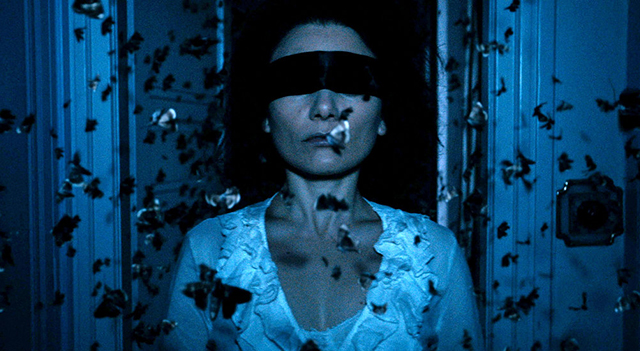
The third feature film from writer/director Peter Strickland (Berberian Sound Studio), The Duke of Burgundy, takes place in a pocket universe that’s populated by women only. As idiosyncratic and malicious as Strickland’s previous work, here our provocateur storyteller seeks and succeeds a cheeky consortium between sexploitation à la Jess Franco (think Vampyros Lesbos) and the cushy deadpan domesticity you might find in an erstwhile sitcom.
Evelyn (Chiara D’Anna) and Cynthia (Sidse Babett Knudsen) share passions for each other, for sadomasochism, for butterflies – both women are entomologists – and for role-playing. The Gothic flavor of the film, the nuanced charms, subtle humor, seductive confab, hallucinatory visuals, and bravura delicacy on display amounts to delicious and amorously-owed entertainment.
2. It Follows
David Robert Mitchell, USA
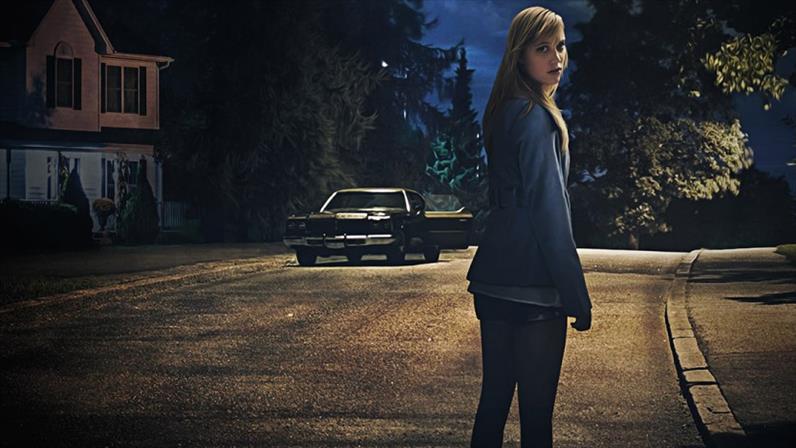
Remember the name David Robert Mitchell. His old school horror film, It Follows, is keenly observed and beset with ill-lit hallucinations, angst-fuelled lament, and radiant performances – expressly Maika Monroe’s breakout performance – in one of the most poetic studies of terror this side of vintage Brian De Palma and Dario Argento.
Jay (Monroe), our ill-starred heroine battling a sexually transmitted curse that shape-shifts into some of the creepiest ghouls going, this is the film that made audiences at Cannes sit up and take notice. In turns unsettling, sexy, and audacious, It Follows is a spine-chilling supernatural stroke of genius. Masterful.
1. Carol
Todd Haynes, UK/USA

“What a strange girl you are, you must be from outer space,” quips Carol Aird (Blanchette) with a delicate reserve to Therese Belivet (Rooney Mara), a shopgirl with aspirations in 1952 New York in Todd Haynes (I’m Not There) intelligent and agonizing film, Carol.
Part revisionist melodrama and postmodernist Douglas Sirk-style weepie, Carol is a decidedly outré lesbian love story as well as Haynes most meticulously crafted, richly detailed, and most stirring work.
Sexual politics and identity are regularly tested and thought about in cinema, but rarely with such nimble naturalism and perceptivity. Carol is a masterpiece, triumphant in both its artifice and merciless honesty, it glitters like a precious stone; the finest film of 2015.
Author Bio: Shane Scott-Travis is a film critic, screenwriter, comic book author/illustrator and cineaste. Currently residing in Vancouver, Canada, Shane can often be found at the cinema, the dog park, or off in a corner someplace, paraphrasing Groucho Marx. Follow Shane on Twitter @ShaneScottravis.